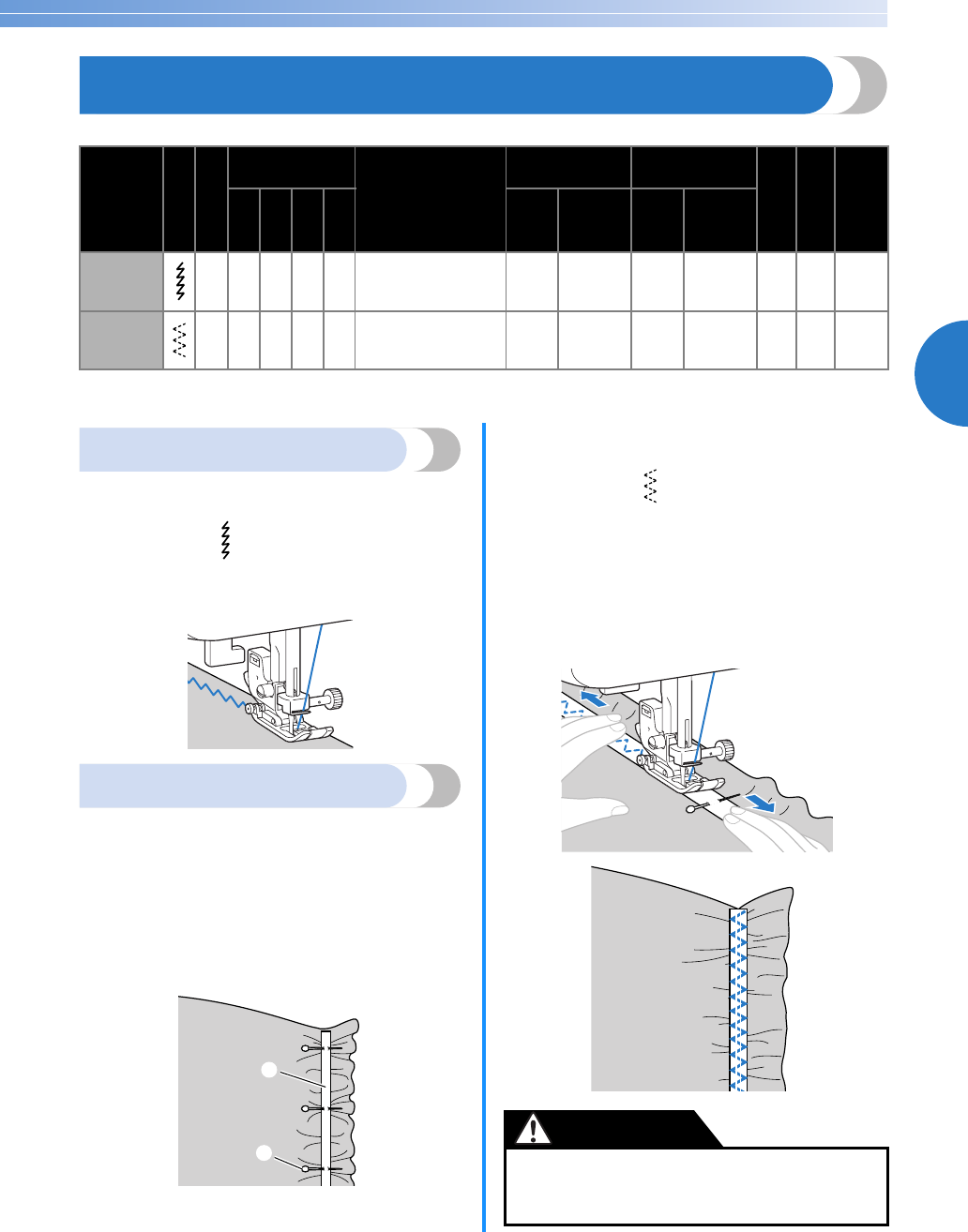
41
3
SEWING STRETCH FABRICS AND ELASTIC TAPE
Stretch fabrics can be sewn and elastic tape can be attached.
*Rfc.: Reinforcement
Observe the corresponding precautions when performing each of the following stitching operations.
Stretch stitching
a
Attach zigzag foot “J”.
b
Select stitch .
c
Sew the fabric without stretching it.
Elastic attaching
When elastic tape is attached to the cuff or waist of a
piece of clothing, the finished dimensions will be that
of the stretched elastic tape. Therefore, it is necessary
that a suitable length of the elastic tape be used.
a
Pin the elastic tape to the wrong side of the
fabric.
Pin the elastic tape to the fabric at a few points to make
sure that the tape is uniformly positioned on the fabric.
a Elastic tape
b Pin
b
Attach zigzag foot “J”.
c
Select stitch .
d
Sew the elastic tape to the fabric while
stretching the tape so that it is the same length
as the fabric.
While pulling the fabric behind the presser foot
with your left hand, pull the fabric at the pin nearest
the front of the presser foot with your right hand.
Stitch Name
Pattern
Presser Foot
Pattern No.
Application
Stitch Width
[mm (inch.)]
Stitch Length
[mm (inch.)]
Twin Needle
Walking Foot
Reverse/
Reinforcement
Stitching
70 stitches
model
60 stitches
model
50 stitches
model
40 stitches
model
Auto Manual Auto Manual
Stretch stitch J 03030303
Sewing stretch fabrics
and decorative stitching
1.0
(1/16)
1.0–3.0
(1/16–1/8)
2.5
(3/32)
1.0–4.0
(1/16–3/16)
Yes
( J )
No Rfc.
3-point
zigzag stitch
J 05050505
Overcasting on medium
weight or stretch fabrics,
attaching elastic, darn-
ing, etc.
5.0
(3/16)
1.5–7.0
(1/16–1/4)
1.0
(1/16)
0.2–4.0
(1/64–3/16)
Yes
( J )
No Rfc.
1
2
● When sewing, be sure that the needle does
not touch any pins, otherwise the needle may
bend or break.
CAUTION
*
*


















